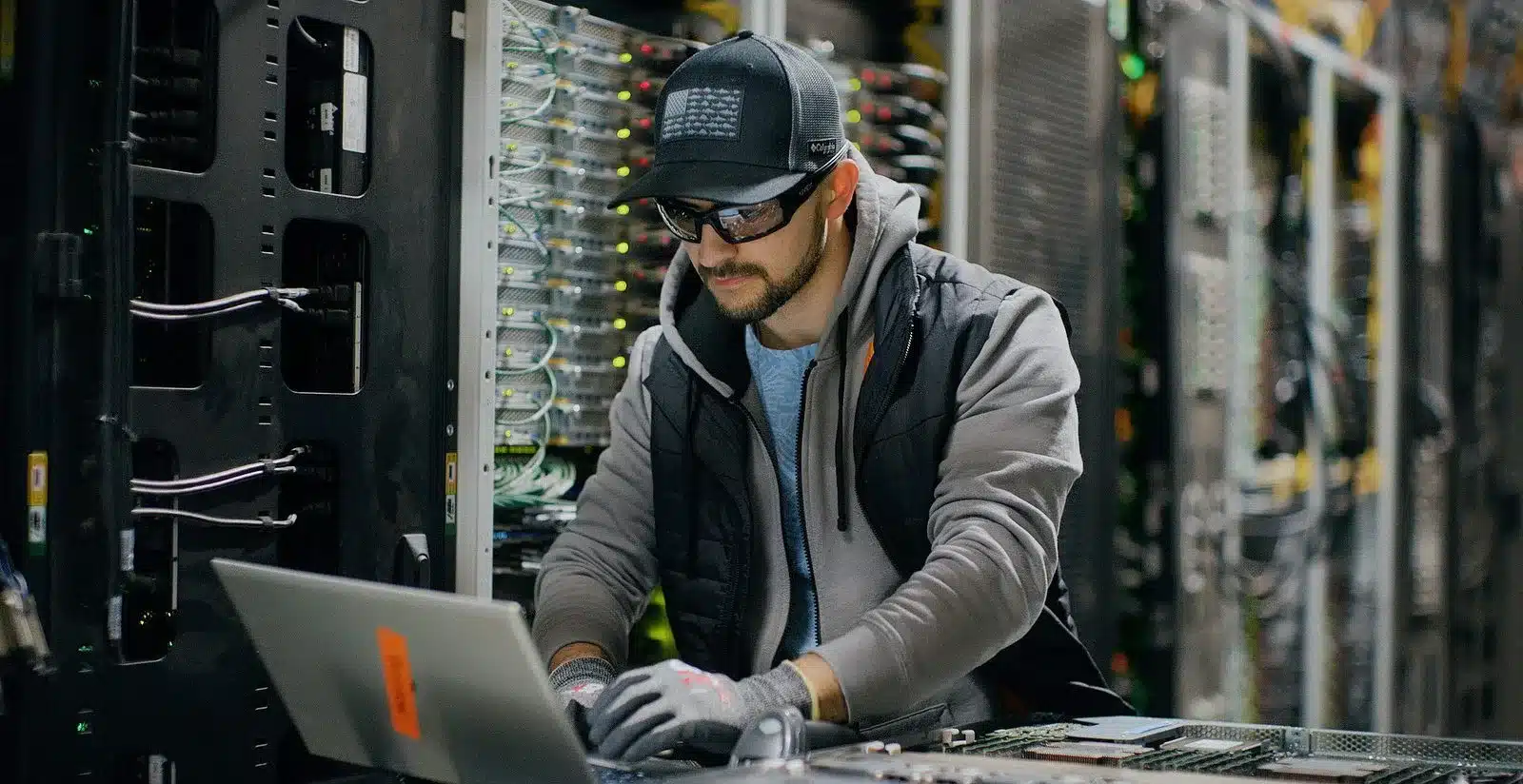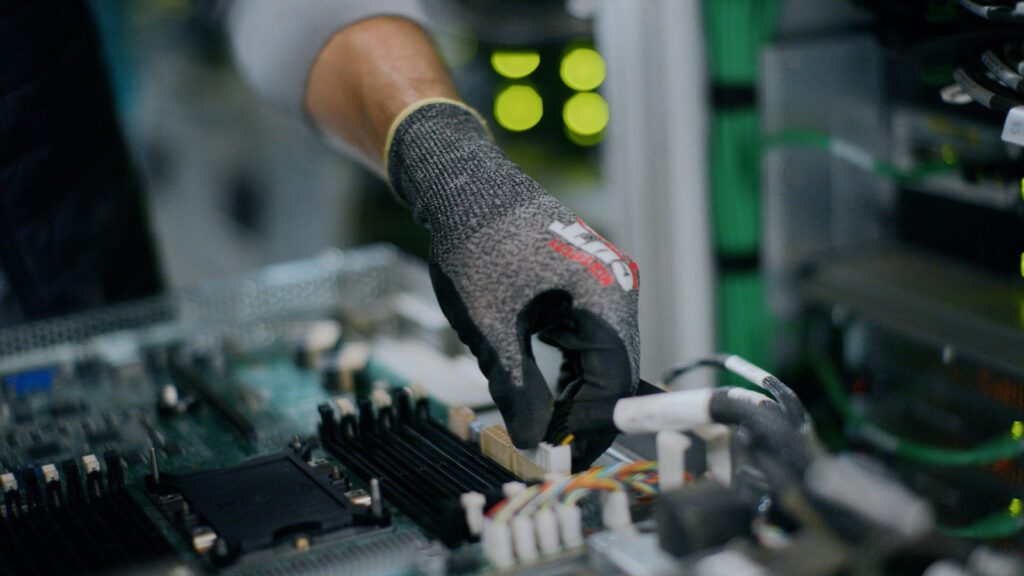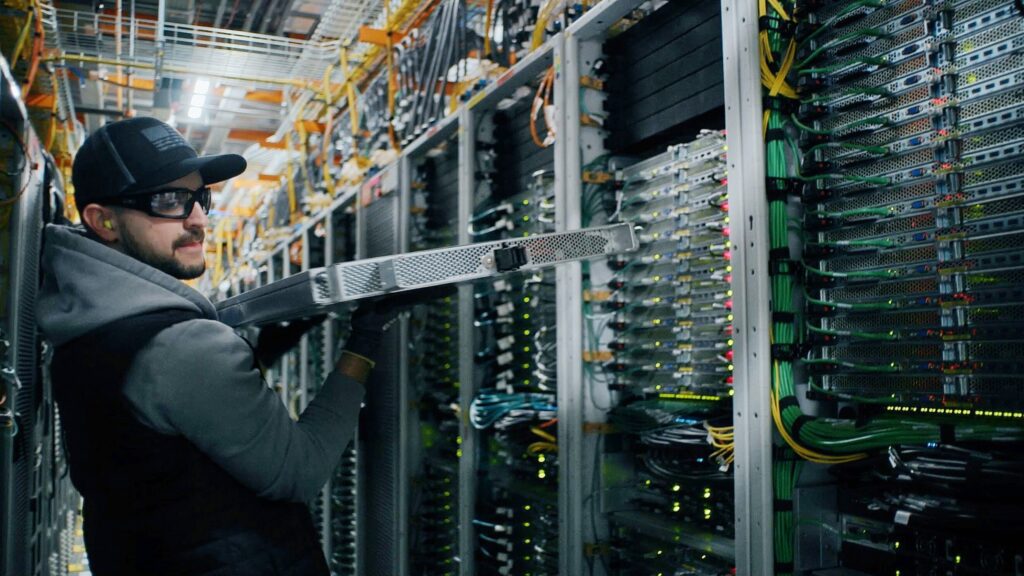
(Photo courtesy of Amazon)
- Fidel Contreras explains “tickets,” “red zones,” and “time warps.”
When I wrote Sunday’s feature on an Amazon jobs overview, I wondered about the daily routine of working in a data center, beyond the wordy job descriptions. Fidel Contreras, a data center technician lead with Amazon Web Services (AWS) in Oregon, shared his story.
Fidel started working for the company six years ago, after his high school counselor recommended enrolling in the Data Center Technician Training Program at a local community college.
“I’d only been in the program for a few weeks before Amazon offered me an apprenticeship. I was 18,” said Fidel, who works on the Data Center Operations (DCO) team and is primarily in charge of issues related to a host network and server racks.
As a technician, Fidel is assigned “tickets,” or rather, a list of issues, at the start of his shift.
“If you’re more experienced, like me, you tend to get a shorter list of tickets that are more complicated,” he explained. “Newer technicians usually get a longer list of simpler tickets.”

A fascinating aspect of working for AWS is “you just don’t know what’s going to happen next,” he said, of the round-the-clock workplace.
“Once you’re through the first of many layers of tight security in a data center, it kind of looks like any other workplace, with rows of desks and cubicles,” he said. “When we’re not working on tickets, this is where we sit with our teammates.
“One of the most eye-catching things you’ll see as you go further into a data center are the cables that run alongside and above the server racks. These cables are a vital part of the networking equipment, delivering high volumes of data at long distances and allowing the servers to talk to the outside world.”
Server rooms are known as the “red zone,” the most high-security area of the data center, he noted.
“When I go into the red zone with a batch of tickets, I get so focused on what I’m doing that I hardly ever look at the clock,” he said. “I call it the ‘time warp.’”
New server racks come into the data center daily. Fidel’s colleague, Dallin Puzey, works on the infrastructure delivery team that installs new racks and network devices. Puzey started as a rack install technician after completing the Data Center Technician Training Program. Now he’s a manager of a team of a dozen technicians. Dallin’s team makes sure the racks are installed and connected properly by going through a long checklist to verify every rack is in pristine condition. Because the racks have tilt-indicators, the team can determine if the rack spent any time on its side, for example, if it fell over in transit. If the components are loose in the complex hardware, it could be a critical issue. If the team has doubts about a rack, it’ll be returned.
“All of a sudden, a new type of rack will come in, and you have to learn all the technology that’s in that one and be ready to troubleshoot it,” Fidel said.

If a rack passes muster, a data center engineering operations (DCEO) team places “whips” on the racks after they’re taken into the red zone to be installed. A whip is a distinctive cable that controls the electrical supply for computers, servers, and networking devices. The team is responsible for maintaining many of the data center’s critical support systems.
Fidel said Tasha Engum, a member of the DCEO team, begins every shift by walking the entire building, checking for alarms. This includes making sure everything in the air handling units, fire systems, circuit breakers, and electrical rooms is working properly. If there are no issues, Engum moves directly to her daily maintenance tasks and tickets.
Fidel encouraged his brother, Ramon, to investigate opportunities with AWS. He now also works as an AWS technician.
“I wake up every morning, and I feel good about going to work,” said Fidel.
#####
NOTE: Part 6 of this economic development impact series will continue Wednesday, Aug. 7, looking at Delta Wind Farm, the state’s first utility-scale wind farm, which quietly began operations June 18.
Read original article by clicking here.

